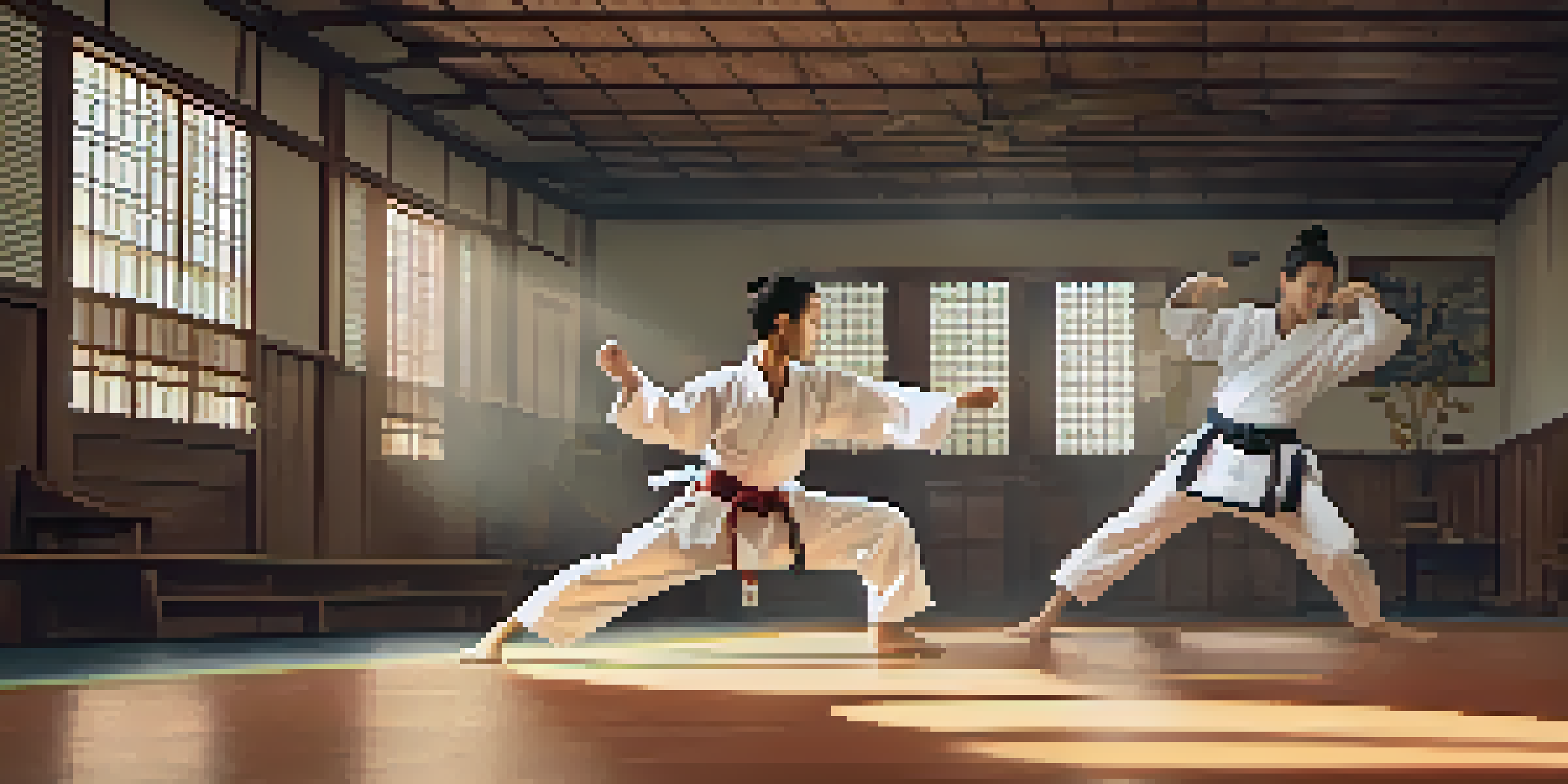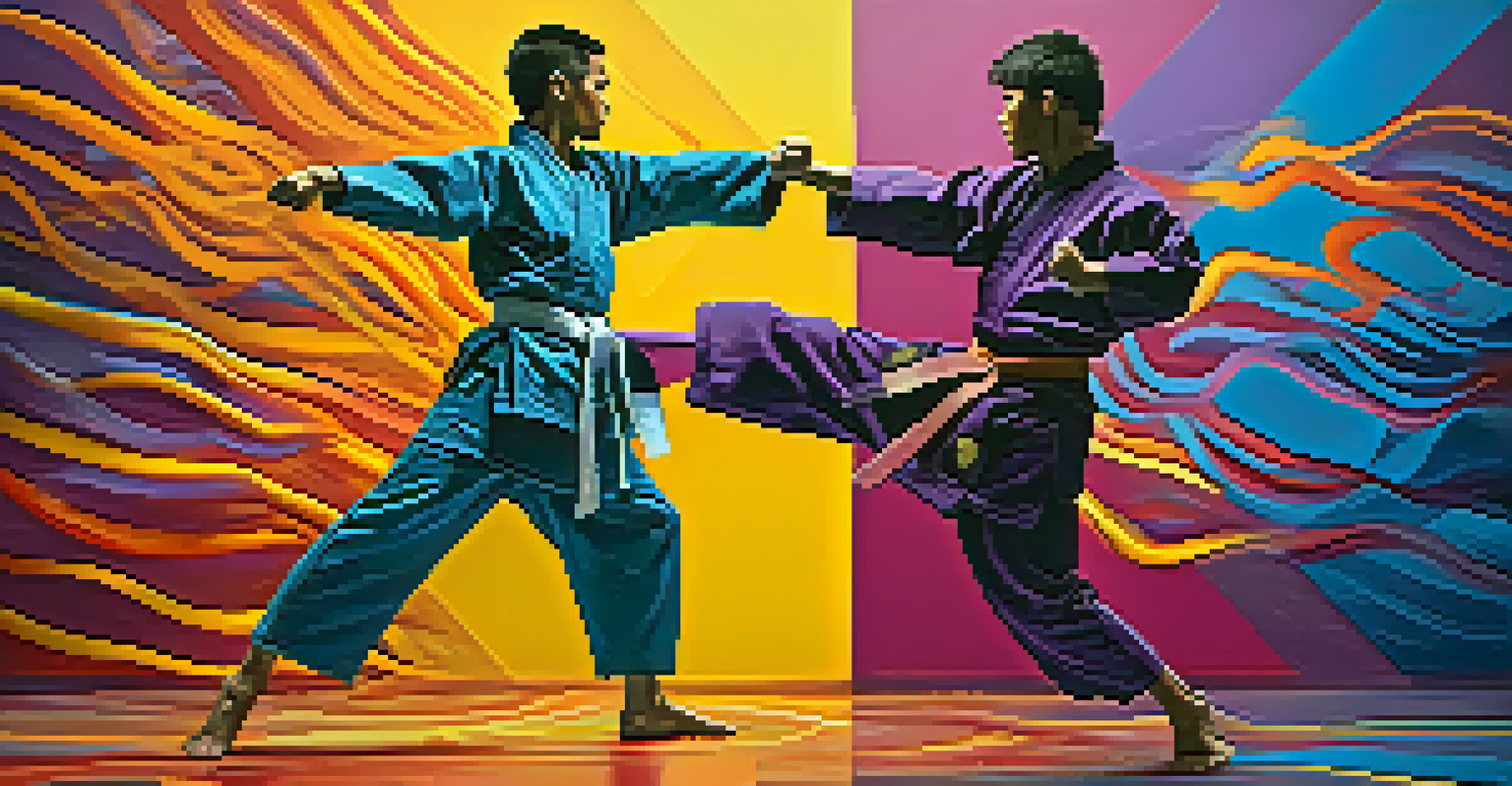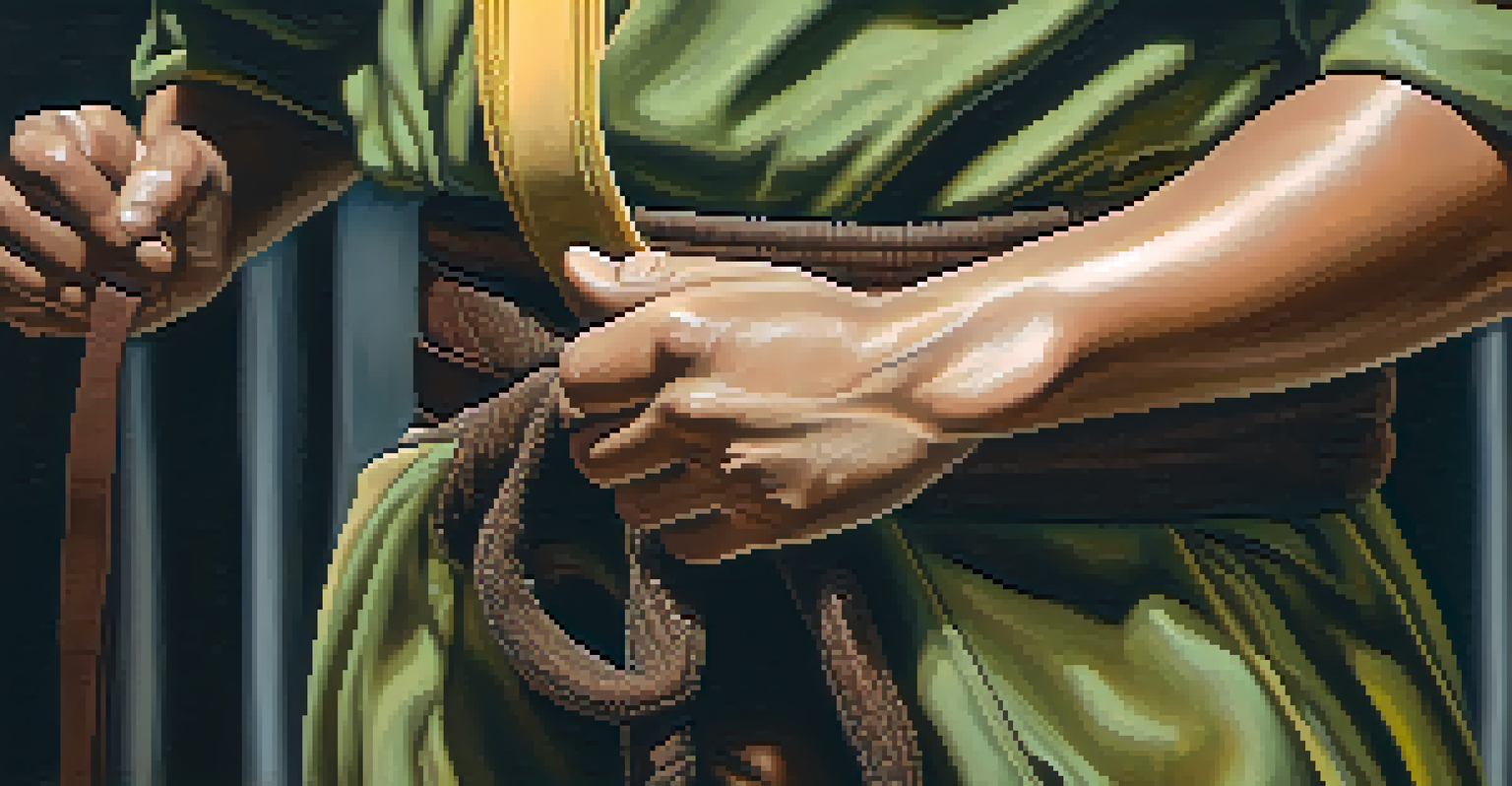Martial Arts Fusion: Blending Techniques from Around the World

The Essence of Martial Arts Fusion: A Global Perspective
Martial arts fusion is all about blending techniques from different styles, creating a rich tapestry of movement and philosophy. Imagine combining the grace of Brazilian Jiu-Jitsu with the striking power of Muay Thai—it’s like mixing different flavors to create a unique dish. This approach not only enhances physical skills but also encourages a deeper understanding of diverse cultures and traditions.
The greatest victory is that which requires no battle.
While each martial art has its roots and unique methods, fusion opens the door to innovation and adaptability. Practitioners can discover new ways to express themselves and tackle challenges. In a world that's increasingly interconnected, this blending mirrors how cultures influence each other, creating something beautiful and functional.
The journey of martial arts fusion is not just about combat; it’s also a personal evolution. By learning from different disciplines, martial artists can cultivate versatility, resilience, and creativity, which are essential both on and off the mat.
A Brief History of Martial Arts Development
Martial arts have evolved over centuries, influenced by various cultures and historical events. From the disciplined forms of Chinese Kung Fu to the practical techniques of Sambo from Russia, each style reflects the needs and values of its time. Understanding this history helps practitioners appreciate the nuances of each technique they integrate into their practice.

As globalization took hold, the chance to learn from different martial arts became more accessible. The rise of mixed martial arts (MMA) competitions showcased how fighters could successfully blend techniques from different styles, leading to increased interest in martial arts fusion. This evolution highlights the importance of adaptability in training and competition.
Fusion Enhances Martial Arts Skills
Blending techniques from various martial arts styles fosters innovation, adaptability, and personal growth.
Today, martial arts fusion continues to thrive as practitioners experiment with combinations, creating hybrid styles that suit their individual needs. This ever-evolving landscape encourages creativity and innovation, making martial arts a dynamic field of study.
Popular Martial Arts Styles for Fusion
Some martial arts styles lend themselves particularly well to fusion. For example, Taekwondo's dynamic kicks can enhance the striking capabilities of a Karate practitioner. Similarly, incorporating elements of Capoeira, with its fluid movements and acrobatics, can add a unique flair to traditional martial arts forms.
Martial arts are about finding yourself, building yourself, and discovering your potential.
Brazilian Jiu-Jitsu (BJJ) is another popular choice in fusion due to its focus on ground fighting and submission techniques. Many fighters incorporate BJJ into their training to improve their grappling skills, regardless of their primary discipline. This cross-training not only develops a more well-rounded fighter but also fosters camaraderie among practitioners of different backgrounds.
Exploring various styles allows students to discover their preferences and strengths. By integrating techniques from diverse martial arts, practitioners can develop a unique fighting style that reflects their personality and goals.
Physical Benefits of Martial Arts Fusion Training
Engaging in martial arts fusion training offers numerous physical benefits, including improved strength, flexibility, and coordination. Practitioners often experience enhanced cardiovascular fitness as they learn to combine techniques from different styles. This dynamic training keeps workouts exciting and varied, reducing the risk of burnout.
Moreover, fusion training encourages the development of balance and agility, essential components for any martial artist. For instance, blending the footwork of boxing with the stances of Kung Fu can lead to better movement and positioning during sparring sessions. The diverse techniques challenge the body in new ways, promoting overall fitness.
Physical and Mental Benefits Abound
Engaging in martial arts fusion improves physical fitness and encourages mental resilience and emotional growth.
As students progress, they may find that their increased physical capabilities translate to other areas of life. Whether it's better posture, improved stamina, or more energy throughout the day, the benefits of martial arts fusion extend far beyond the dojo.
Mental and Emotional Growth Through Fusion
Martial arts are not just about physical prowess; they also promote mental and emotional growth. Practicing various styles encourages adaptability and problem-solving, essential skills in both martial arts and everyday challenges. The mental discipline required to learn new techniques fosters resilience, patience, and focus.
Moreover, the fusion of techniques provides a unique opportunity for self-discovery. As practitioners engage with different styles, they may uncover hidden strengths and preferences. This exploration can lead to increased self-confidence and a deeper appreciation for the art of martial combat.
Additionally, training in a fusion environment often cultivates a sense of community. Practitioners from diverse backgrounds come together, sharing experiences and learning from one another. This camaraderie can enhance the emotional aspects of training, making it a supportive and enriching journey.
Challenges in Blending Martial Arts Techniques
While martial arts fusion offers many benefits, it also presents unique challenges. One of the primary hurdles is ensuring that the techniques being combined are compatible. Not all styles mesh well together, and mismatched techniques can lead to confusion or even injury. Practitioners must take care to understand the principles behind each technique to create a cohesive practice.
Additionally, there is the risk of diluting the essence of each martial art. Some purists argue that blending styles may lead to a loss of traditional values and techniques. Finding the right balance between innovation and respect for the origins of each art is crucial for successful fusion.
Challenges in Technique Compatibility
Successful martial arts fusion requires careful consideration of technique compatibility to avoid confusion and preserve traditional values.
Moreover, practitioners must be open-minded and willing to adapt their mindset. This flexibility is essential when learning from different styles, as it can be challenging to break habits ingrained by a single discipline. Embracing change and being receptive to new ideas can significantly enhance the fusion experience.
The Future of Martial Arts Fusion
As martial arts continue to evolve, the future of fusion looks bright. With the increasing popularity of mixed martial arts and cross-training, more practitioners are discovering the benefits of blending techniques from various styles. This trend is likely to fuel further innovation and creativity within the martial arts community.
The rise of technology, such as online training platforms and virtual classes, also plays a significant role in the future of martial arts fusion. Students can now access diverse styles and instructors from around the world, making it easier to learn and experiment with new techniques. This accessibility can lead to a richer fusion experience for practitioners.

Ultimately, the future of martial arts fusion lies in the hands of the practitioners themselves. As they continue to explore and innovate, the art form will undoubtedly expand, leading to new styles and approaches that reflect the values and experiences of a global community.